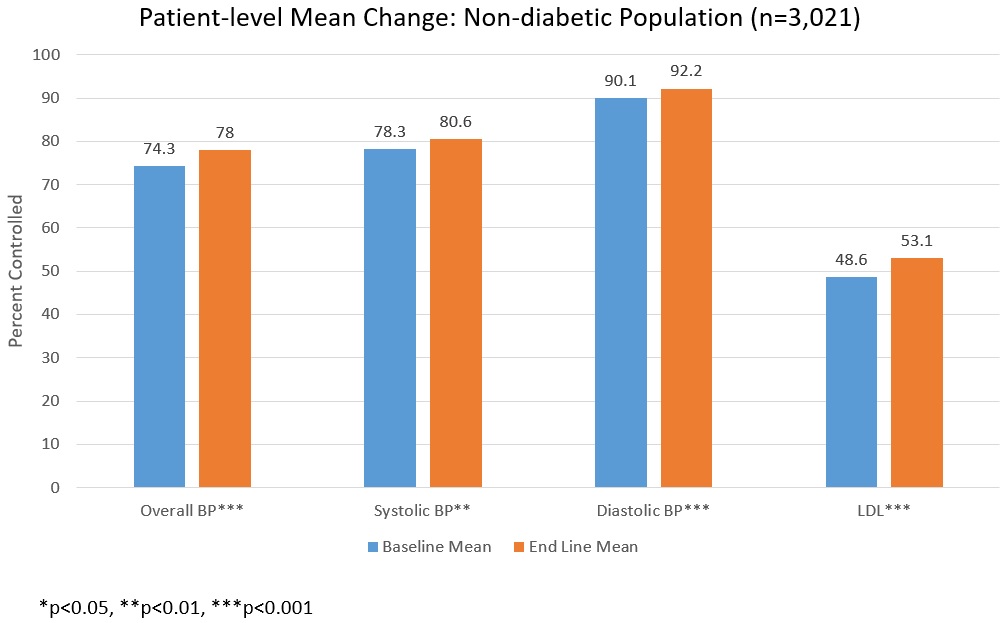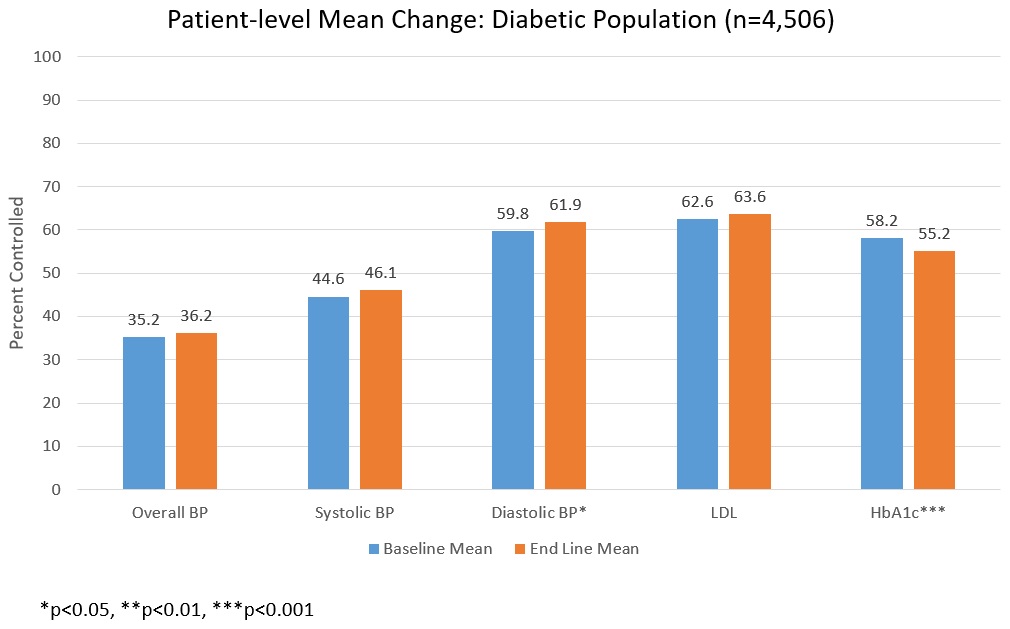AT GOAL: A practice-focused Performance Improvement (PI) CME Quality Initiative improved blood pressure and LDL control rates in 69 practices. This initiative was established to address a compelling need to improve the disproportionate CVD-related morbidity and mortality throughout the Southeastern United States. AT GOAL consisted of practice-specific data auditing on cardiovascular risk factors (quality measures): Blood Pressure (BP), Low-Density Lipoproteins (LDL) and Hemoglobin A1c levels in patients diagnosed with Diabetes. The project strategies consisted of physician education on evidence-based treatment strategies, quarterly physician performance feedback towards their attainment of the quality measures, subject matter expert consultation and other strategies at the practice levels such as patient education. Sixty nine practices were enrolled; 40 practices with a Diabetic Patient Population) 29 without a Diabetic Patient Population.
Funded in 2009 through 2011, by Pfizer Pharmaceutical Education Grant, COSEHQ’s 3-year quality Improvement project rolled out across the Southeast with an enrollment of 69 different physician practice sites successfully improved physician performance and patient outcomes.
COSEHQ has a history of effecting quality improvement in the Southeast U.S. by implementing cardiovascular performance improvement in a number of rural and urban clinical practices. COSEHQ utilizes a performance improvement continuing medication education (PI CME) model to drive improvement in the attainment of evidence-based target goals for cardiovascular risk factors.
The results of this project demonstrated significant improvement in health outcomes as shown in the figures. This successful project was published by the CDC Evaluation and Program Effectiveness Team, Division for Heart Disease and Stroke Prevention in 2016, at the conclusion of an evaluation study conducted by ICF International, Inc. where statistically significant improvements between baseline and the end lines were achieved. The project was eventually expanded in Georgia and South Carolina through contracts with their State Health Departments.
Outcome Evaluation Findings and Discussion
Practice-Level Change Between Baseline and End Line

Outcome Evaluation Findings and Discussion
Practice-Level Change Between Baseline and End Line (continued)
